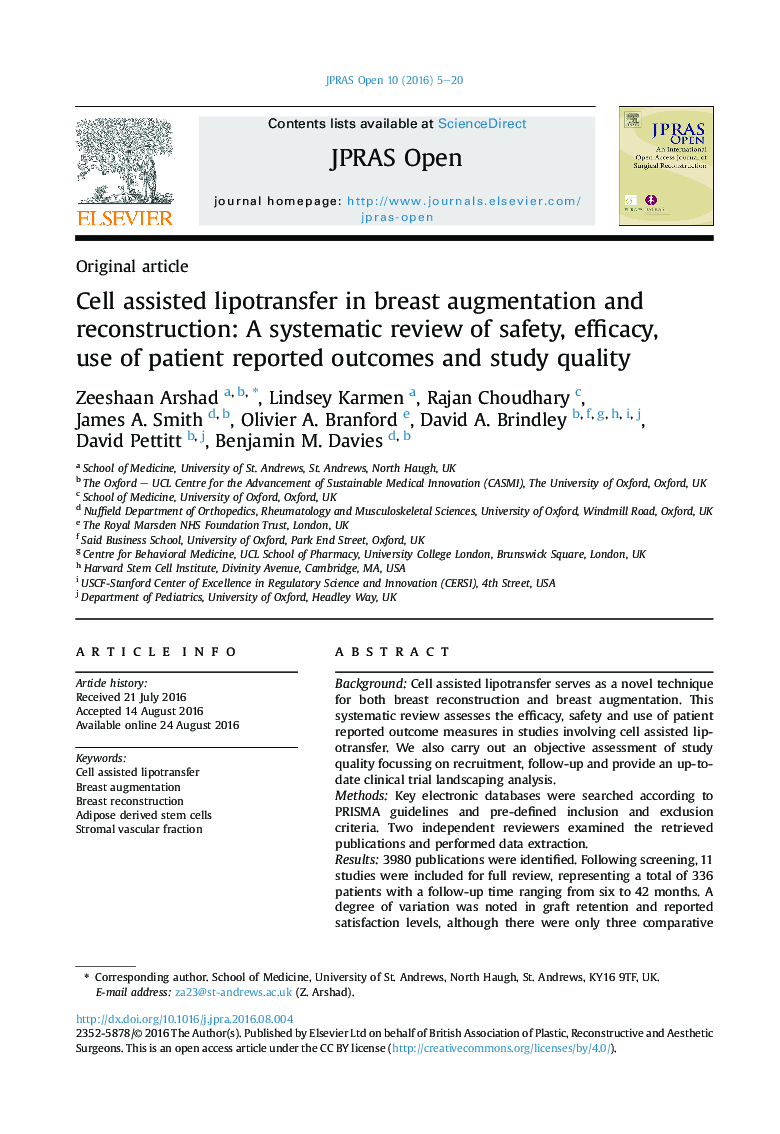| کد مقاله | کد نشریه | سال انتشار | مقاله انگلیسی | نسخه تمام متن |
|---|---|---|---|---|
| 4305676 | 1612562 | 2016 | 16 صفحه PDF | دانلود رایگان |
BackgroundCell assisted lipotransfer serves as a novel technique for both breast reconstruction and breast augmentation. This systematic review assesses the efficacy, safety and use of patient reported outcome measures in studies involving cell assisted lipotransfer. We also carry out an objective assessment of study quality focussing on recruitment, follow-up and provide an up-to-date clinical trial landscaping analysis.MethodsKey electronic databases were searched according to PRISMA guidelines and pre-defined inclusion and exclusion criteria. Two independent reviewers examined the retrieved publications and performed data extraction.Results3980 publications were identified. Following screening, 11 studies were included for full review, representing a total of 336 patients with a follow-up time ranging from six to 42 months. A degree of variation was noted in graft retention and reported satisfaction levels, although there were only three comparative studies with conflicting results. Complications occurred at a rate of 37%. Additionally, there was a paucity of objective outcomes assessments (e.g. 3D assessment modalities or validated patient reported outcome measures) in the selected studies.ConclusionsCell assisted lipotransfer is a surgical technique that is currently employed sparingly within the plastic & reconstructive surgery community. Presently, further technical and outcome standardization is required, in addition to rigorous randomized controlled trials and supporting long-term follow-up data to better determine procedural safety and efficacy. Routine use of more objective outcome measures, particularly 3D assessments and validated patient reported outcome measures, will also help facilitate wider clinical adoption and establish procedural utility.
Journal: JPRAS Open - Volume 10, December 2016, Pages 5–20
